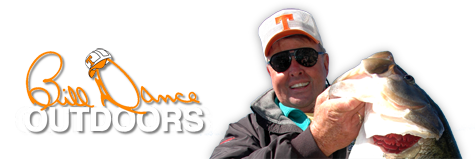Tips Pond Construction and ManagementPosted: August 7th, 2013 by Bill Dance Over the last decade or so pond management has become a reality for many outdoorsmen wanting to create their own fishery. Gone are the days when you had somebody dig a big hole, wait for enough rain and then fill it with fish. Today a lot of planning and maintenance goes into a pond, and if done right the results are certainly worth it. With that in mind here are some tips, and bear in mind, they may not be universal, but it is certainly a good place to start: * Site selection is important. Sure, you can put in a well, and have a pond nearly anywhere, but it is smart to have Soil Conservation Service conduct a survey (which is free) to determine soil content. This is important, for example, if you were to have an area with sand in it, the result could be seepage…basically a pond that won’t hold water. Choosing to construct the pond on acreage that can catch a lot of rain run-off is also a no-brainer as is choosing a site that will require minimum dirt work. If such a site is available to you, it will cut costs. * Have goals. Know what you want to accomplish with your pond–before you begin construction. Different people want ponds for different reasons. Some want them simply to enhance the aesthetics of their property, some want bluegill for their grandkids, some want a better-than-average fishery and some want trophy bass. Knowing what you want from the beginning will help you get there. * As for trophy fish management, perhaps something more sought after by outdoorsmen, an aggressive fertilizer and lime program will likely be required. As well as the supplemental stockings of a variety of prey fish. * Get a reputable contractor to build your pond. Proper construction is paramount. From doing things like using the original, clay-based topsoil to seal the bottom to constructing banks with a two-to-one slope (to deter shallow water and light penetration that causes unwanted aquatic growth), construction is key. * When newly constructed it is wise to apply fertilizer across the bottom of your pond-to-be. This is a measure to improve water quality. * You have got to keep an eye on water quality, and this quality is maintained via the proper distribution of lime and fertilizer. * There has to be a plan as far as the stocking of fish goes. Even the most basic plan calls for prey (or baitfish) to go in before predators (bass); otherwise it is not going to work. * You want to make sure your prey fish (minnows and bluegill) have the opportunity to spawn at least once or perhaps two to three times before the bass are introduced. This way when the bass are introduced they go into water that is swarming with fish (or food) and grow quickly. * Many bass anglers don’t favor stocking catfish in their ponds, but it can and does work. Some believe catfish will feed on bass eggs and thus prove detrimental. However, this problem can be eliminated by feeding the catfish with floating commercial feed. Catfish can be a plus to a pond. Their organic waste and even the break down of their commercial feed can act as an organic fertilizer. Channel cats are most advised for pond stocking. * Most literature recommends stocking: 1,000 head of bream (75 percent bluegill, 25 percent shellcracker/redear) per acre; 100 largemouth per acre; 10 pounds of minnows per acre and 100 pounds of catfish per acre. * A lot of people are interested in stocking Florida-strained largemouths, but consider your “growing season” because it might not make much of a difference. Northern-strain largemouths are perhaps the most commonly stocked. * Once bass become of harvestable size (about the third year in a non-fertilized pond) it is recommended that pond owners remove 10 pounds of bass per acre. Five times that many pounds of bream should be taken. And of course, harvest rates increase if a pond is well fertilized. * As for bream a popular plan these days is for pond owners to return the really big bluegill to the water to maintain (or protect) the brood fish, while keeping fish that are slightly smaller than the biggest bream normally caught. * Pond owners should also buy their fish from a reputable supplier. It is likewise not a good idea to introduce fish into your pond that may have come from another fishery…especially a river fishery. This is because there is a chance you will introduce disease or parasites from another waterway. As always, catch one for me!
|
Upload your trophy bass photo (or any other fish) to BillDanceOutdoors.com! Or, post comments about other photos submitted by Bill Dance fans.
Bill Dance is one of the most recognizable names and brands in fishing and outdoor gear. Please browse through our selection of superior products that proudly carry the Bill Dance name.
|





